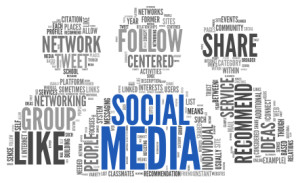by gabriel_sales | Aug 15, 2013
 Building landing pages that convert is both a science and an art. You need to present information in a logical way with a visually inviting format—without selling too hard. Note easy, but not impossible either.
Building landing pages that convert is both a science and an art. You need to present information in a logical way with a visually inviting format—without selling too hard. Note easy, but not impossible either.
Here are 5 Tips for Landing Page Conversion Success:
- Get rid of the “Submit” button.
I know that the word “submit” is a clear denotation for what is happening when someone fills out a form on a landing page but tell me, what’s exciting about “submitting” anything? Ever? Nothing. So, don’t put it on your landing page forms.
Make your form button a place where you restate the value of what your prospects are getting when they fill out your form, i.e. “Get My White Paper Now” or “Send Me More Information”. Like Amazon’s “Buy with 1-Click” button, reminding people of what they are getting out of the transaction makes them much more likely to actually click.
2. Remove extraneous links.
With a homepage on a website, having a navigation bar along the top and links to recent blog posts along the side is probably a good idea. You want people to be able to find a wide range of information with ease. Your goal for landing pages should be different; a good rule of thumb is ‘one goal for one landing page’.
This means having a complex navigation bar and links on the side or in the text is a distraction from your overall goal. If your goal is to get people to sign up for a webinar, make that the only action available to them on the page and take away all other navigation. If your goal is to offer educational content, you can offer it in various mediums, just don’t also put a link for a webinar invite alongside your content offers.
3. State the value in the headline.
Headlines on landing pages are extremely important. The headline is usually the first thing the eye sees when they come to your landing page, so it needs to grab attention. Make the headline the place where you make the value of your landing page offer glaringly obvious. For example, use “5 Easy Steps to Build Your Own Lead Generation System” rather than “Download Our New Lead Generation White Paper”. The clearer you can make the value, the closer you are to having landing pages that convert.
4. Say less.
While you do want to make sure that the value you are offering is clearly stated, it does not need to be overstated. When describing your landing page offer, it is usually a good idea to offer short sentences and bullet points.
When people come to a landing page, they want to quickly determine whether or not to leave. While it is easy to quickly scan through bullet points, reading through long paragraphs takes time, and if I can’t find the information I want in ten seconds or less, I’m gone. If you need to explain your offer in sentences that’s fine, just use very short paragraphs and italics or bold for emphasis.
5. Make the form “pop”.
Landing pages should be highly visual, and it’s great to use graphics and pictures to grab attention and help tell a story. That being stated, you want to make sure that your visuals don’t distract from your overall goal: building landing pages that convert. To do this, make sure your landing page form stands out and is visually inviting. This can be done easily by making the form a different color, giving it a 3-D shadow, or changing the font.
If you would like more information on landing pages, you can read more educational blogs by clicking here. If you have any questions, please feel free to contact us.
by gabriel_sales | Jul 18, 2013
 A landing page is where your prospect ends up after they have clicked on a link from a search engine or search engine ad. If you get someone to click on your website, that’s great. But, the goal at the end of the day is to convert and close deals, so if your landing page can’t do that, it isn’t worth much.
A landing page is where your prospect ends up after they have clicked on a link from a search engine or search engine ad. If you get someone to click on your website, that’s great. But, the goal at the end of the day is to convert and close deals, so if your landing page can’t do that, it isn’t worth much.
Your landing page has to be engaging enough that prospects want to stay long enough to get your full message. Graphics and a nice design will help, but the content is what keeps people interested.
Here are three tips for how to create a successful landing page for B2B Demand Generation:
- Have something to offer everyone.
If someone clicked on one of your links, it is likely they have interest in what you do. However, someone clicking on your link may not know much about your line of work, as they are very early in the buying cycle. Having broad and general educational content readily available will not only appease your prospects’ curiosity, it will increase the chances of those prospects coverting to sales qualified. For example, if you answer the question “What is Business Management Planning” for someone, they are likely to remember you when they realize they need that service themselves.
2. Be specific, too.
No, we aren’t contradicting ourselves; your landing pages need to be both broad and specific. Using the “above the fold/below the fold” format works well for us. Here is an example. While your early stage prospects need light educational content, some prospects are much closer to buying. You need to offer them something too.
As can be seen in our example, above the fold of the landing page is content that is more general. Below the fold are several tabs, each with a more specific subject. You can segment the tabs in many ways to further engage prospects and move them down the sales pipe. For example, you can have tabs that read, “How We’re Different,” “Success Stories,” and “Pricing”. Each of these tabs will help your prospects with their buying decision and simultaneously help you understand where they are in their buying cycle.
3. Tell people what to do.
The best way to get prospects to do what you want them to on your landing page is to just tell them. Do you want them to call you? Then say, “Call Today!” in big letters with your phone number. Do you want them to download something? Say, “Download this white paper to learn XYZ.” If you want them to educate themselves, say “For more educational content, click here.”
The simpler you make it for your prospects, the longer they will stay on your landing pages and the more they will like you. So, avoid the complex and flashy sales pitches and just say what you mean.
If you have any questions, please feel free to contact us.
by gabriel_sales | Jul 8, 2013
 B2B Blogging will help your sales!
B2B Blogging will help your sales!
A 2012 study of Fortune 500 companies found that only 28% have corporate blogs. While this number is up dramatically from the same study in 2008, we think it is still quite low considering the amount of value a corporate blog can bring to a company.
B2B Blogging is great fit for web marketing for many reasons, but we think the main benefits fall into two categories: forwarding sales and marketing objectives and improving SEO.
Sales & Marketing Benefits
One of the biggest benefits of having a company blog is building awareness around your brand. Customers today want to know more about the companies they buy from and are looking for ways to build trust. A blog helps get your company’s name out there and at the same time humanizes your brand.
Through the content you post, blogs can be even more of an asset to your company. By asking people to subscribe to your blog, you can build an online community and foster intelligent discussions around industry trends and best practices. By doing so, you can position yourself as a thought-leader in your industry and build credibility for the products or services you provide. If you are able to provide valuable content to your readers, they will likely turn into leads.
SEO Benefits
The primary marketing function of a company blog is generally to help improve SEO. By having more pages (blog posts) with the keywords your prospects are searching for, you are more likely to show up in the top results of search engines.
Polaris B found that companies that have published 200 blog posts or more generate 5X as much traffic as those with 10 or less. So, the more you post, the better (while never sacrificing quality/content value). Having multiple blog posts also gives you the opportunity to use different keyword variations, thereby allowing you to penetrate more verticals.
In summary, B2B blogging is a great way to bring value to your B2B company while at the same time further your sales and marketing objectives. Blogs bring faces to the name of your brand and help you connect with more customers in new and exciting ways.
Bottom line: If you aren’t blogging, you should be.
For more on B2B blogging for web marketing, click here.
by gabriel_sales | May 16, 2013
 When you think about your personal internet use, it is likely you spend a significant portion of your time watching videos of some kind. People using the internet today are accustomed to being able to consume information through video format, which can be seen by the fact that YouTube now has roughly 4 billion views per day. If your B2B company can present its sales and marketing messages through this platform, you will be ahead of your competitors.
When you think about your personal internet use, it is likely you spend a significant portion of your time watching videos of some kind. People using the internet today are accustomed to being able to consume information through video format, which can be seen by the fact that YouTube now has roughly 4 billion views per day. If your B2B company can present its sales and marketing messages through this platform, you will be ahead of your competitors.
You should start by setting up and YouTube channel for your company, which you can think of as your own television station. Through this station, you can present educational videos on industry trends, demonstrations of how your product or service solves business problems, testimonials from your past clients, short ads about promotional offers, etc.
The key to using video as a marketing strategy is to not to push the sale too hard. Just like on television, deliberately pushy ads can annoy. What you should focus on instead is providing something of value to your viewers. If you can give them something entertaining, or better yet useful, your video will be much more likely to deliver the sales results you desire. Using videos in your B2B digital marketing strategy can help you achieve your sales goals by improving retention (because you can show customers how to use your product/service) and fueling the decision-making process during the customer acquisition phase of the sales cycle.
Because producing and posting online videos is generally cost-effective, this is one area of digital marketing where you stand to gain a lot from a little effort. In the B2B sales world where time equals money, it really does not get much better than that.
For more information on using video marketing for B2B sales, please reach out to us at Gabriel Sales. You can find our contact information here.
by gabriel_sales | May 10, 2013
 It’s 2013, and it is safe to say that if your B2B company is not using social media as a marketing tool, you are behind. This is because many B2B companies (including your competitors) have realized the tremendous value in leveraging social media sites into their overall sales strategy. If for some reason your business has yet to join the social media world, this blog is meant to help introduce you to B2B social media marketing.
It’s 2013, and it is safe to say that if your B2B company is not using social media as a marketing tool, you are behind. This is because many B2B companies (including your competitors) have realized the tremendous value in leveraging social media sites into their overall sales strategy. If for some reason your business has yet to join the social media world, this blog is meant to help introduce you to B2B social media marketing.
In general, social media are websites and applications that allow users to create profiles, publish information and connect with friends and businesses. The users of these sites connect by ‘adding’ or ‘following’ one another. By adding or following someone or some company, you in effect ‘subscribe’ to all of the content they publish. The type of content published varies across the different social media platforms.
The largest and most predominant social media site today is Facebook. Facebook currently has 1.06 billion users and is mainly used by individuals to carry out digital, interpersonal relationships. However, businesses of all kinds have started to use Facebook as a way to help market their company, build their brand and connect with their customers in the digital space. Many B2B companies have recently discovered that most of their current customers and potential prospects are already on Facebook and have started to create Facebook-based marketing strategies to expand their reach. Using Facebook, B2B marketers can now push updates on new products, promotions or other activities to a large number of interested people, with a single click.
Twitter is another social media site B2B companies are using to build brand awareness and expand their reach. Twitter is similar to Facebook in that people ‘subscribe’ to your content by following you. Twitter differs in that the content published by users is in the structured form of a ‘tweet’. A tweet is a short message (140 characters max.) that can include short ideas, quotes, links to other pages, etc. In the B2B world, tweets are a great place to post industry trends, a problem you helped solve for one of your clients or even some simple ad copy. The one thing to remember with Twitter is your tweets should always stay on topic to things your followers are interested in.
The social media site most conducive to making B2B connections is LinkedIn. LinkedIn was designed explicitly for business professionals, meaning B2B people are already using it. This is now a place where B2B companies are making new connections with buyers and increasing their contacts.
Google+ is also becoming a major player in the social media world for B2B sales and marketing. With now two times the number of users as LinkedIn (400 million), Google+ may prove to be a major competitor to Facebook in the future. The value of this for B2B companies is that Google+ is more conducive to marketing than any of the other sites in that activity on Google+ is automated into its search engine.
If your B2B company has yet to take any action towards social media marketing, setting up profiles, finding followers and posting may seem like a daunting task. However, it helps to look at these social media sites as communities that you wish to join. Just like physical communities, once you start participating in digital communities, people starting interacting with you and relationships start to form. On the other hand, if your company simply puts up a profile and then does nothing with it, social media sites aren’t likely to produce marketing results. You need to remain constantly active on these sites, not just publishing your own content, but also interacting with the content posted by others. Used properly, these sites can easily translate into B2B lead generation and increased revenue.
For more information on leveraging social media as a marketing strategy for B2B sales, please reach out to us at Gabriel Sales. You can find our contact information here.
by gabriel_sales | Mar 23, 2013
 In the past few years, digital marketing has become the centerpiece of many B2B sales strategies. As a sales and marketing outsourcing company for B2B sales, we have found digital marketing to be quite effective for building brand awareness and generating leads. One of the best ways to leverage digital marketing is with the use of a company blog.
In the past few years, digital marketing has become the centerpiece of many B2B sales strategies. As a sales and marketing outsourcing company for B2B sales, we have found digital marketing to be quite effective for building brand awareness and generating leads. One of the best ways to leverage digital marketing is with the use of a company blog.
Blogs in the B2B sales world can be used as a platform for publicizing information about new products or services, promotions, etc. Informative or educational blogs can also be used to position yourself as an industry expert. If you can demonstrate expertise to your readers, your product or service starts to look much more appealing.
Blogs are also a great way to add a human quality to your business’s digital presence. In addition to information about new products or industry trends, you can use a blog to profile different employees or discuss a particular instance when your business solved a problem it was facing. This will help give your company a human aspect that is often lost online.
The key to achieving success in terms of B2B digital marketing with a blog is to make sure it remains active. This obviously takes more time, but constantly posting new and different information on your blog is well worth the effort. If you are able to consistently give your readers something of value, they will continue to come back and hopefully they will eventually reach out to you in some way.
While blogs are not necessarily considered social media, some of them can be thought of as online communities. There are many blogs that function as authorities in specific industries, which are often read by buyer’s who are looking for quality information in regards to making a purchase. If you are able to convince the blogging authority to endorse you in some way, you will likely attract a lot of leads.
It may be difficult to convince someone to advertise your product or service for you, but it is possible. Gaining the support of influential bloggers can be done by enticing him or her to write a review about you in exchange for a free product or service. However even if you cannot achieve this, any positive mention of your company is a good thing.
If you still need convincing that blogging can be an effective marketing tool for B2B sales, or would like help creating a corporate blog of your own, please feel free to contact us.
 Building landing pages that convert is both a science and an art. You need to present information in a logical way with a visually inviting format—without selling too hard. Note easy, but not impossible either.
Building landing pages that convert is both a science and an art. You need to present information in a logical way with a visually inviting format—without selling too hard. Note easy, but not impossible either.
 A landing page is where your prospect ends up after they have clicked on a link from a search engine or search engine ad. If you get someone to click on your website, that’s great. But, the goal at the end of the day is to convert and close deals, so if your landing page can’t do that, it isn’t worth much.
A landing page is where your prospect ends up after they have clicked on a link from a search engine or search engine ad. If you get someone to click on your website, that’s great. But, the goal at the end of the day is to convert and close deals, so if your landing page can’t do that, it isn’t worth much. B2B Blogging will help your sales!
B2B Blogging will help your sales! It’s 2013, and it is safe to say that if your B2B company is not using social media as a marketing tool, you are behind. This is because many B2B companies (including your competitors) have realized the tremendous value in leveraging social media sites into their overall sales strategy. If for some reason your business has yet to join the social media world, this blog is meant to help introduce you to B2B social media marketing.
It’s 2013, and it is safe to say that if your B2B company is not using social media as a marketing tool, you are behind. This is because many B2B companies (including your competitors) have realized the tremendous value in leveraging social media sites into their overall sales strategy. If for some reason your business has yet to join the social media world, this blog is meant to help introduce you to B2B social media marketing. In the past few years, digital marketing has become the centerpiece of many B2B sales strategies. As a sales and marketing outsourcing company for B2B sales, we have found digital marketing to be quite effective for building brand awareness and generating leads. One of the best ways to leverage digital marketing is with the use of a company blog.
In the past few years, digital marketing has become the centerpiece of many B2B sales strategies. As a sales and marketing outsourcing company for B2B sales, we have found digital marketing to be quite effective for building brand awareness and generating leads. One of the best ways to leverage digital marketing is with the use of a company blog.